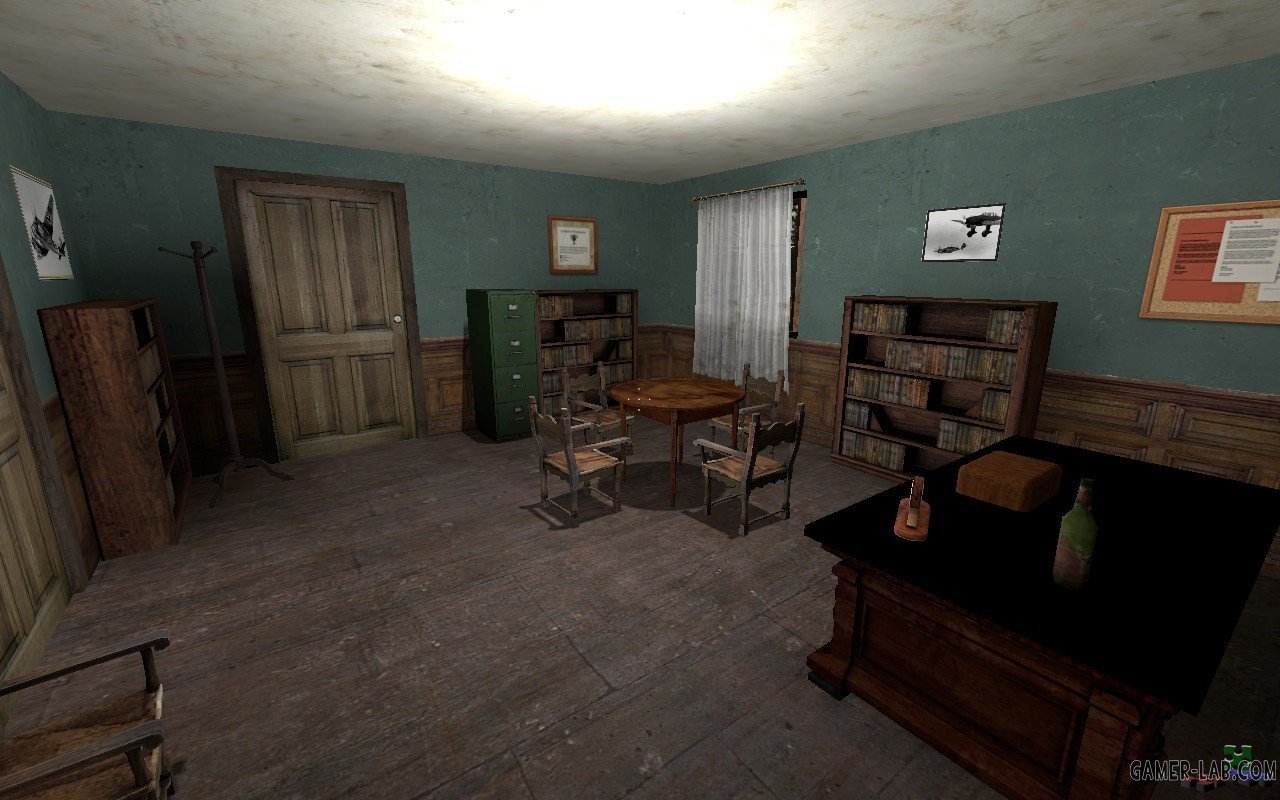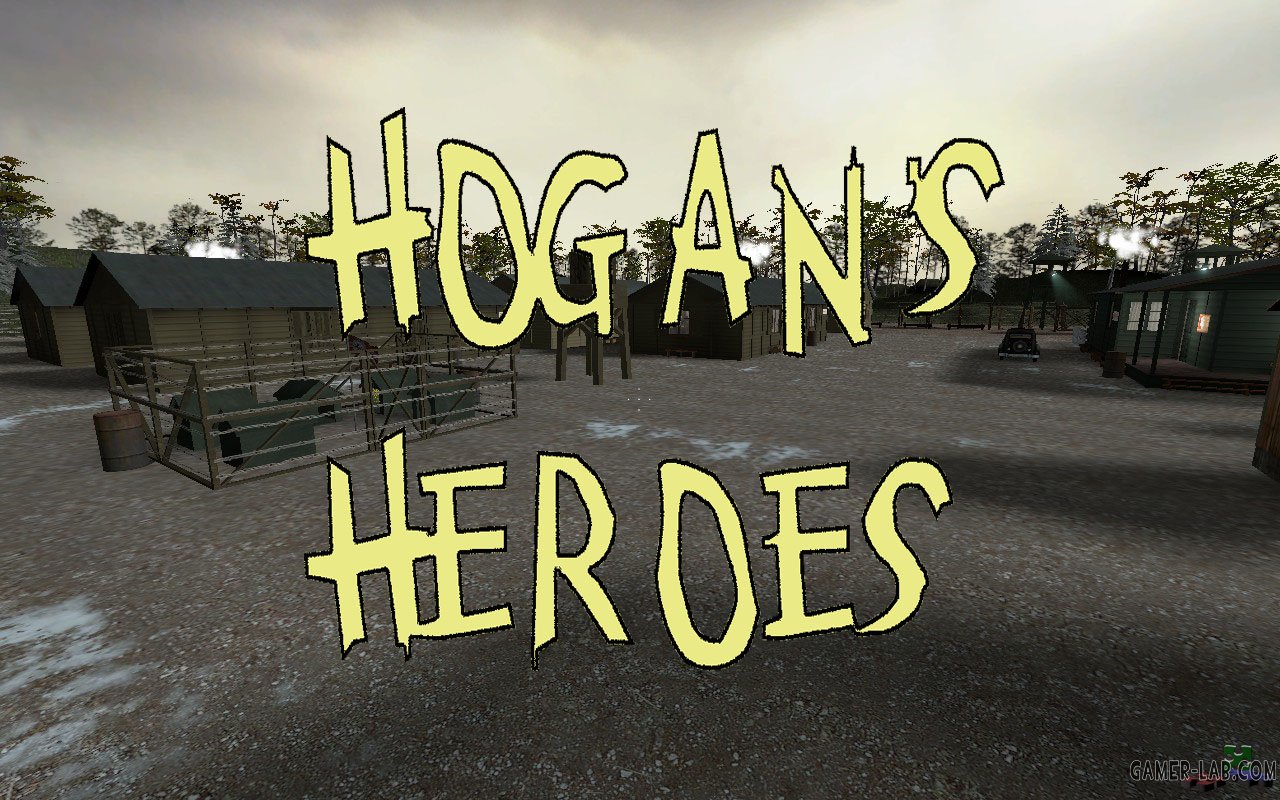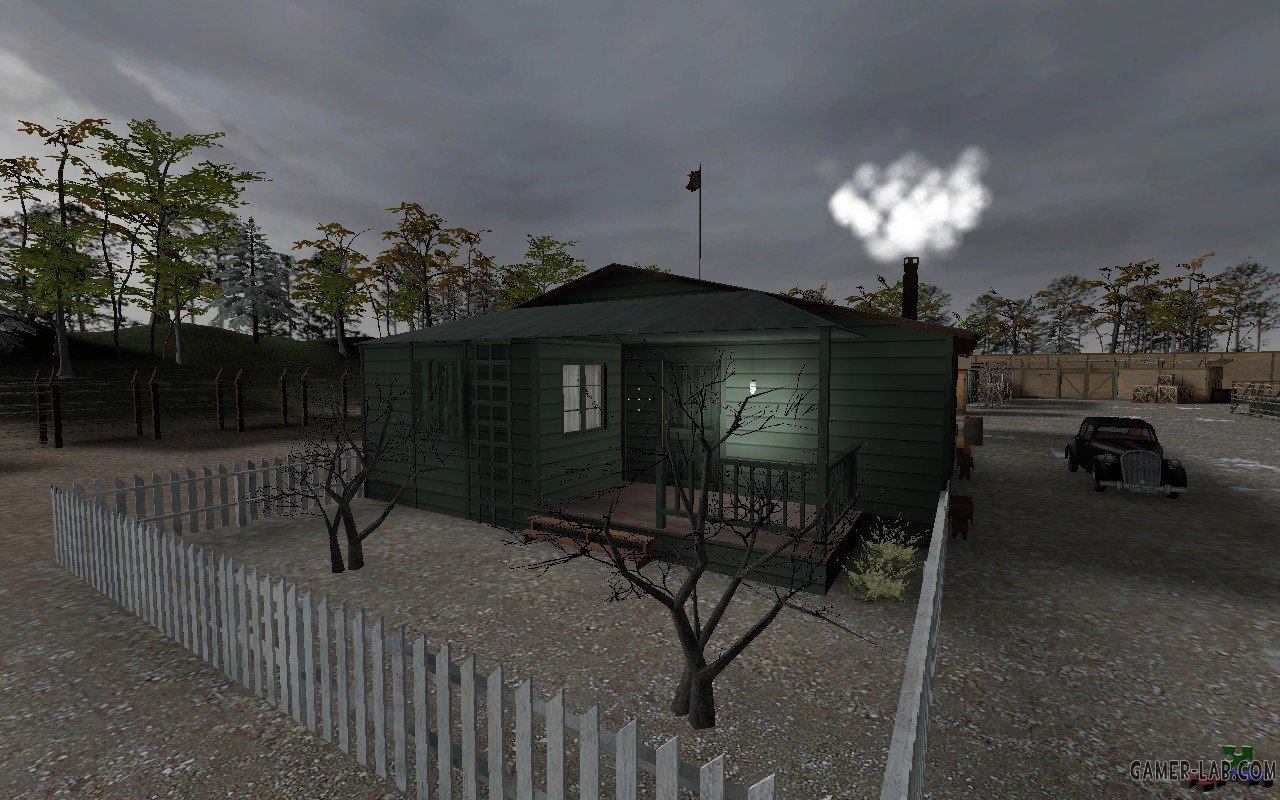Hogan's Heroes: Laughter, Espionage, And WWII's Unsung POWs
Step into the world of Stalag 13, where the absurdity of war meets the brilliance of comedic espionage. Hogan's Heroes is a classic sitcom about a group of Allied prisoners who, far from being helpless captives, ingeniously sabotage Nazi Germany right from within a prisoner of war (POW) camp. This beloved series defied conventional wartime narratives, offering a unique blend of humor, daring missions, and unforgettable characters that continue to captivate audiences decades later.
Airing for 168 episodes from September 17, 1965, to July 4, 1971, on the CBS network, Hogan's Heroes carved out a special place in television history. It presented a daring premise: a German World War II POW camp serving as a covert base for Allied resistance. This article delves into the show's captivating plot, its iconic characters, memorable episodes, and the enduring legacy that makes it a timeless piece of television comedy.
Table of Contents
- The Unconventional Premise of Hogan's Heroes
- Meet the Heroes: The Iconic Cast and Characters
- Behind the Scenes: The Creators and Production of Hogan's Heroes
- Episode Highlights and Memorable Moments
- Historical Accuracy vs. Comedic License in Hogan's Heroes
- The Enduring Legacy and Cultural Impact
- Where to Watch Hogan's Heroes Today
- The Planned Movie and Future Prospects
The Unconventional Premise of Hogan's Heroes
At its core, Hogan's Heroes dared to explore humor in a setting typically associated with grim realities: a World War II German prisoner of war camp. Set at Stalag 13, a fictional Luftwaffe (German Air Force) run camp near the village of Hammelburg, the series flips the script on the traditional POW narrative. Instead of focusing on escape attempts and the hardships of captivity, it portrays the camp as a highly sophisticated, albeit covert, base of operations for Allied espionage and sabotage.
The genius of the show lies in its ability to extract consistent humor from this audacious premise. The prisoners, led by the resourceful Colonel Robert E. Hogan, operate with an astonishing degree of freedom, often right under the very noses of their unsuspecting German captors. This constant tension between the Germans' perceived control and the Allies' actual manipulation forms the backbone of the comedic situations. The show masterfully balances the inherent danger of their missions with the lighthearted, often farcical, interactions between the characters, creating a unique comedic tone that resonated with millions.
Sabotage and Espionage from Within Stalag 13
The inmates of Stalag 13 are not merely surviving; they are actively engaged in a comprehensive espionage and sabotage campaign directed against Nazi Germany. Under Colonel Hogan's leadership, this group of Allied prisoners of war leverages their unique position to disrupt the German war effort and facilitate Allied escapes. They have an intricate network of tunnels, hidden rooms, and sophisticated communication devices, all concealed within the camp itself. From blowing up train lines and arms factories to rescuing downed Allied pilots and smuggling out vital intelligence, their operations are incredibly diverse and daring.
The humor often stems from the elaborate schemes Hogan and his team devise to trick, outwit, or simply confuse their German warders, Colonel Wilhelm Klink and Sergeant Hans Schultz. For instance, in one memorable plot, a prince of an African nation, negotiating with the Germans to build a submarine base in his country, pays a visit to Stalag 13. Hogan cleverly replaces him with Kinchloe, one of his own men, to fool Colonel Klink and gather intelligence. This constant game of cat and mouse, where the prisoners are always one step ahead, makes for compelling and hilarious viewing. The series truly focuses on Stalag 13 as a base of operations for U.S. resistance fighters, showcasing their ingenuity and unwavering commitment to the Allied cause.
Meet the Heroes: The Iconic Cast and Characters
The enduring appeal of Hogan's Heroes is inextricably linked to its brilliant ensemble cast. Each actor brought a unique charm and depth to their character, creating a dynamic and memorable group that felt like a family. The interactions between the quick-witted Allied prisoners and their bumbling German counterparts were the source of endless laughter and defined the show's comedic style. The casting was truly inspired, bringing together talents who could perfectly embody the show's unique blend of comedy and underlying tension.
Here's a look at the main actors and their pivotal roles in the series:
| Actor | Character | Role in Hogan's Heroes |
|---|---|---|
| Bob Crane | Colonel Robert E. Hogan | The cunning leader of the Allied prisoners, mastermind of all operations. |
| Werner Klemperer | Colonel Wilhelm Klink | The bumbling, self-important commandant of Stalag 13. |
| John Banner | Sergeant Hans Schultz | Klink's jovial, easily bribed, and often clueless chief guard. |
| Robert Clary | Corporal Louis LeBeau | The French master chef and tunnel expert. |
| Richard Dawson | Corporal Peter Newkirk | The British con artist, master of disguises, and lock picker. |
| Ivan Dixon | Staff Sergeant Ivan Kinchloe | The American communications expert and impersonator. |
| Larry Hovis | Sergeant Andrew Carter | The American explosives expert and impressionist. |
Colonel Hogan: The Mastermind of Stalag 13
United States Army Air Forces Colonel Robert E. Hogan, brilliantly portrayed by Bob Crane, is the undeniable main protagonist and strategic genius of Hogan's Heroes. As the senior officer of the prisoners of war at Stalag 13, Hogan leads a highly organized and incredibly effective group that secretly sabotages the German war effort and helps Allies escape Germany. His character is a master manipulator, possessing an uncanny ability to exploit the weaknesses and vanity of his German counterparts, particularly Colonel Klink and Sergeant Schultz.
Hogan's charm, quick wit, and unflappable demeanor make him an ideal leader. He is always several steps ahead, orchestrating elaborate schemes with a cool head, even when faced with imminent danger. Bob Crane's portrayal brought a charismatic energy to Hogan, making him both a believable military leader and a comedic anchor. He was the linchpin around whom all the espionage and humor revolved, embodying the spirit of resistance with a smile and a cunning plan.
Klink and Schultz: The Bumbling Adversaries
No discussion of Hogan's Heroes would be complete without celebrating the iconic duo of Colonel Wilhelm Klink and Sergeant Hans Schultz, brought to life by the phenomenal talents of Werner Klemperer and John Banner, respectively. These two German officers, while nominally in charge of Stalag 13, are consistently outwitted, outmaneuvered, and utterly oblivious to the extensive Allied operations happening right under their noses. Their incompetence is not just a plot device; it's a wellspring of constant, delightful comedy.
Werner Klemperer's portrayal of Colonel Klink, the pompous, self-important, yet fundamentally inept commandant, earned him multiple Emmy nominations and a win. Klink genuinely believes Stalag 13 is escape-proof and that he is a brilliant officer, despite all evidence to the contrary. His constant need for approval, particularly from his superiors, makes him an easy target for Hogan's manipulations. John Banner's Sergeant Schultz, the jovial and often-hungry chief guard, is equally iconic. His catchphrase, "I see nothing! I hear nothing! I know nothing!", perfectly encapsulates his willful ignorance, a survival mechanism that allows him to accept bribes and turn a blind eye to the prisoners' activities without truly acknowledging them. The dynamic between Hogan's cunning and Klink and Schultz's obliviousness is perhaps the funniest show ever made about fictional hilarity in a Nazi P.O.W. prison.
Behind the Scenes: The Creators and Production of Hogan's Heroes
The success of Hogan's Heroes was not just due to its talented cast but also the vision of its creators, Bernard Fein and Albert S. Ruddy. They conceived a show that dared to find humor in one of history's darkest periods, a concept that, on paper, might have seemed controversial. However, their execution, coupled with the brilliant writing and direction, transformed it into a beloved comedy. The series managed to walk a fine line, never trivializing the horrors of war but rather highlighting the resilience and ingenuity of those caught within its confines through the lens of satire.
The show's production was meticulous, creating a believable yet stylized POW camp set. From the barracks to Klink's office and the hidden tunnels, the attention to detail helped immerse viewers in the world of Stalag 13. The series was filmed at Desilu Studios (later Paramount Studios), and the exterior shots of the camp became instantly recognizable. The consistent quality of writing, which maintained the delicate balance between comedy and the underlying premise, was crucial to its longevity. The show's commitment to its unique tone and character development ensured its place as a classic American television sitcom.
Episode Highlights and Memorable Moments
Across its 168 episodes, Hogan's Heroes delivered countless memorable moments and intricate plots. Each episode typically revolved around a new mission for Hogan and his team, often involving an elaborate deception to outsmart Klink, a daring rescue, or the destruction of a Nazi facility. The show's formula, while consistent, rarely felt repetitive due to the endless variations on Hogan's schemes and the Germans' predictable gullibility.
Fans often recall episodes where the team had to impersonate high-ranking German officers, smuggle out top-secret plans hidden in plain sight, or even stage elaborate "accidents" to destroy enemy equipment. The humor was often derived from the Germans' own bureaucratic inefficiencies and their unwavering belief in their own superiority, which Hogan consistently exploited. The show's ability to maintain a high level of comedic ingenuity for six seasons is a testament to its creative team. Watching full episodes of Hogan's Heroes, whether season 3 for free on Pluto TV or other platforms, reveals the consistent quality and timeless humor that kept audiences engaged for years.
Historical Accuracy vs. Comedic License in Hogan's Heroes
One of the most frequently discussed aspects of Hogan's Heroes is its approach to historical accuracy. It's crucial to understand that the show was, first and foremost, a comedy. Its primary goal was to entertain and provide laughter, not to serve as a historical documentary. Therefore, significant comedic license was taken with the realities of World War II POW camps and the Nazi regime.
In real World War II POW camps, conditions were often harsh, and escape attempts, while heroic, were incredibly dangerous and rarely successful on the scale depicted in the show. The idea of prisoners operating a vast espionage network with such freedom, and their captors being so consistently oblivious, is entirely fictional. Furthermore, the portrayal of the German characters, particularly Klink and Schultz, as bumbling and somewhat benign, deliberately softened the image of the Nazi regime for comedic purposes. Werner Klemperer, who was Jewish and whose family fled Nazi Germany, famously only accepted the role of Klink on the condition that Klink would always be portrayed as incompetent and never succeed. This artistic choice allowed the show to maintain its comedic tone without glorifying or trivializing the true horrors of the war. The show's historical accuracy is minimal, but its comedic impact and the message of Allied ingenuity against a formidable foe are what truly resonate.
The Enduring Legacy and Cultural Impact
More than five decades after its premiere, Hogan's Heroes continues to hold a special place in popular culture. The beloved TV series from the 1960s brought laughter and excitement to households with its unique blend of comedy and wartime drama. Its enduring appeal lies in its clever writing, memorable characters, and the timeless theme of the underdog outsmarting the powerful. The show's ensemble cast portrayed characters in a WWII POW camp, each adding depth and humor to the narrative, creating a chemistry that remains unmatched.
The series has been syndicated globally and continues to be broadcast on various platforms, introducing new generations to the antics of Hogan, Klink, and Schultz. Its catchphrases, like Schultz's "I see nothing! I hear nothing! I know nothing!", have become ingrained in the lexicon. Hogan's Heroes proved that even in the darkest of settings, humor and human ingenuity can prevail. It stands as a testament to the power of comedy to entertain, even when tackling sensitive historical periods. Fans still actively seek information on episodes, characters, actors, and historical news related to the show, demonstrating its lasting impact.
Where to Watch Hogan's Heroes Today
For fans old and new eager to revisit the comedic escapades of Colonel Hogan and his crew, Hogan's Heroes remains widely accessible. The series, which aired for 168 episodes on the CBS network, has found a second life on various streaming platforms and television channels dedicated to classic programming. You can often stream full episodes and other hit TV shows anytime for free on services like Pluto TV, where you might find Hogan's Heroes Season 3 available. Other platforms may also offer the series, either through subscription or for purchase.
The show's enduring popularity ensures that it's regularly featured in syndication. A quick search for "Hogan's Heroes full episodes" will likely yield numerous options for watching this classic comedy series about a group of prisoners who spy on the Nazis in a World War II camp. Whether you're watching it for the first time or re-experiencing its timeless humor, the adventures at Stalag 13 are just a click away.
The Planned Movie and Future Prospects
The enduring popularity of Hogan's Heroes has naturally led to discussions and plans for adaptations over the years. The idea of a movie based on the show has surfaced periodically, a testament to its lasting cultural footprint. While specific details about a planned movie can fluctuate, the very concept highlights the show's continued relevance and its potential to be reimagined for contemporary audiences. Such a project would undoubtedly face the challenge of balancing the original series' lighthearted comedic tone with the more serious historical context of World War II, a tightrope the original show walked with remarkable success.
The legacy of Hogan's Heroes extends beyond potential remakes. Its unique premise and character dynamics continue to influence comedic storytelling. The show demonstrated that even the most unlikely settings can become fertile ground for humor, provided there's a strong narrative, memorable characters, and a clear comedic vision. As long as audiences appreciate clever wit and the triumph of ingenuity, Hogan's Heroes will remain a cherished piece of television history, inspiring new creative endeavors and continuing to bring laughter to generations.
Conclusion
From its audacious premise to its unforgettable characters, Hogan's Heroes remains a shining example of classic television comedy. It masterfully blended wartime drama with hilarious espionage, creating a unique narrative where Allied prisoners turned their POW camp into a base of operations against Nazi Germany. The brilliant performances by Bob Crane as the cunning Colonel Hogan, Werner Klemperer as the bumbling Colonel Klink, and John Banner as the lovable Sergeant Schultz, among others, cemented their places in television history.
This series, which ran for 168 episodes from 1965 to 1971, proved that laughter could be found even in the most unlikely of circumstances, showcasing the resilience and ingenuity of the human spirit. If you've never experienced the comedic genius of Stalag 13, or if you're a long-time fan looking to relive the laughs, now is the perfect time to discover or rediscover Hogan's Heroes. Share your favorite episodes or characters in the comments below, and let's keep the legacy of these unsung heroes alive!

dod_hogans_heros_v12 - Miscellaneous - Day of Defeat: Source - Maps

dod_hogans_heros_v12 - Miscellaneous - Day of Defeat: Source - Maps

dod_hogans_heros_v12 - Miscellaneous - Day of Defeat: Source - Maps